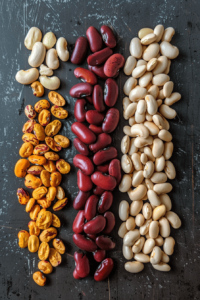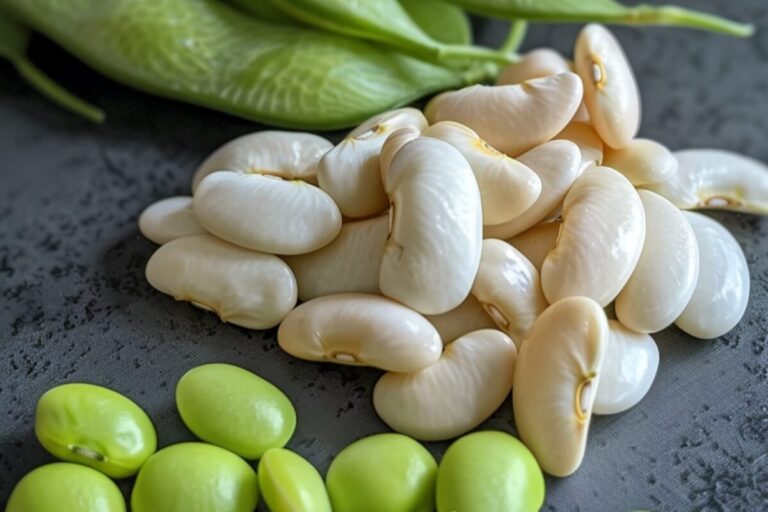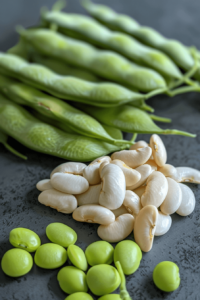Are you curious about which types of beans are the healthiest for you? Beans are a cornerstone of nutritious diets across the globe, revered for their versatility and health benefits. In this article, we delve into the world of beans, uncovering not only the healthiest beans but also sharing some delightful recipes to incorporate them into your daily meals. From black beans to chickpeas and lentils, find out how these humble legumes can contribute to a healthier you.
Black Bean Salad Recipe
Ah, black beans! They’re not only a fantastic source of protein but also rich in fiber and antioxidants. Here’s a simple yet delicious recipe for a black bean salad that promises nutrition and flavor in every bite.
Recipe Name:
Zesty Black Bean Salad
Summary:
This salad blends the robust flavors of black beans with fresh veggies and a zesty lime dressing, perfect for a healthy lunch or a side dish.

Servings:
4 generous portions
Prep Time:
10 minutes
Cook Time:
None, if using canned black beans
Resting Time:
30 minutes to allow the flavors to blend beautifully
Total Time:
40 minutes
Categories:
- Courses: Salad, Side Dish
- Cuisines: Mexican, Fusion
- Keywords: black bean salad, protein-packed salad, vegetarian dish
Equipment:
- 1 large mixing bowl
- Measuring spoons and cups
Ingredients:
- One tin containing 15 ounces of black beans, washed and drained
- 1 cup diced tomatoes, fresh and ripe
- 1 cup diced red bell peppers for a splash of color
- 1/2 cup sweet corn, fresh or thawed from frozen
- 1/4 cup finely chopped red onions for a sharp bite
- 2 tablespoons olive oil, for dressing
- 2 tablespoons fresh lime juice, adding that essential zesty touch
- 1/2 teaspoon ground cumin, for a hint of spice
- Salt and pepper to taste
Instructions:
- Combine the black beans, tomatoes, bell peppers, corn, and red onions in a large bowl.
- In a small bowl, whisk together the olive oil, lime juice, cumin, salt, and pepper.
- Pour the dressing over the bean mixture and toss to coat evenly.
- Chill in the refrigerator for at least 30 minutes before serving to let the flavors meld.
Nutrition:
Each serving is roughly 200 calories, packed with nutrients and fiber.
Notes:
For an extra kick, add chopped cilantro or a dash of chili powder to the salad. This dish is not only a feast for the taste buds but also a colorful addition to any meal.
This refreshing black bean salad is an excellent way to enjoy the nutritional powerhouse that black beans are. Whether you’re looking to enhance your lunch routine or need a quick side that impresses, this recipe covers all bases with its taste and health benefits.
For more detailed insights into bean nutrition and more recipes, check out Health Benefits of Beans. Here, you’ll discover a variety of beans and how to integrate them into your diet effectively.
Overview and Nutritional Benefits of Beans
Beans are not just a staple food in many cultures—they’re also incredibly beneficial for your health. Below, we delve into the nutritional profiles of several popular beans, highlighting their key benefits and providing you with a comparative table to help you choose the right beans for your diet.
Health Benefits of Beans
Beans offer a remarkable range of health benefits. They are a great source of protein, making them an ideal choice for plant-based diets. Additionally, beans are rich in fiber, which can help regulate blood sugar levels and promote a healthy digestive system. They also contain essential nutrients like iron, potassium, and folate.
Nutritional Comparison Table
Here’s a table comparing the nutritional content of four popular types of beans per 100 grams (cooked weight):
| Bean Type | Calories | Protein (g) | Fiber (g) | Iron (mg) | Potassium (mg) |
|---|---|---|---|---|---|
| Black Beans | 132 | 9 | 8.7 | 2.1 | 355 |
| Kidney Beans | 127 | 8.7 | 6.4 | 2.9 | 403 |
| Chickpeas | 164 | 9 | 7.6 | 2.9 | 291 |
| Lentils | 116 | 9.02 | 7.9 | 3.3 | 369 |
Key Nutritional Highlights
- Protein: Beans are a fantastic source of plant-based protein, essential for muscle repair and growth.
- Fiber: High fiber content helps in maintaining bowel health and lowering cholesterol levels.
- Iron: An important component of hemoglobin, iron in beans helps transport oxygen throughout the body.
- Potassium: This mineral is crucial for heart health and proper cell and body functions.
Beans are not only nutritious but also a versatile ingredient that can be incorporated into various dishes. From salads to soups and stews, beans can enhance the flavor and nutritional value of your meals. Additionally, they are cost-effective, making them an economical addition to your diet.
For those interested in exploring more about the nutritional benefits of beans and how they compare to other superfoods, you might find useful information at Guide to Cooking Beans, which provides detailed insights into different bean types and their health advantages.


